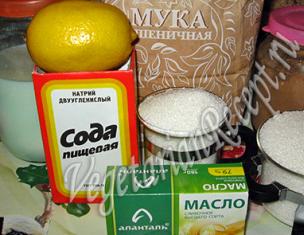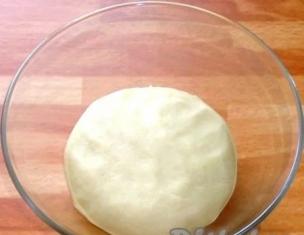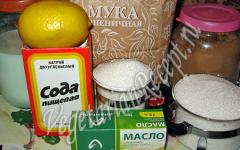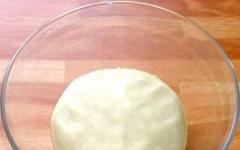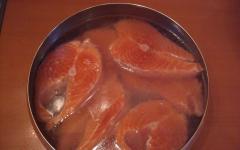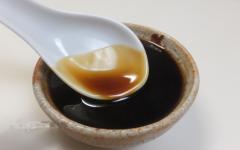BY PLANT
1. Introduction. System organization
transport in plants.
2. Movement of mineral elements
plant nutrition.
3. Transport of organic substances. I. The role of studying the transport of substances:
theoretical significance as one of
problems of physiology
practical significance
the relationship of individual organs in
unified physiological system
Donor-acceptor connections between organs:
organs that supply nutrients
donors,
consuming organs are acceptors.
Name the donors
mineral nutrients
substances and organic
substances. Marcello Malpighi
1628-1694
Malpighi's experience with withdrawal
ring-shaped piece of bark with
stem (A). Swelling of tissue over
ring (B)
Large role in figuring out travel routes
individual nutrients played a role in intake
ringing of plants.
This technique was used at the end of the 17th century. (1679)
Italian explorer M. Malpighi,
who suggested that substances
their soils enter the roots, then along
wood into leaves and stems ( raw juice), and then
processing - in the opposite direction along the bark.
Organization of the transport system
IntracellularNear: within one organ, by
non-specific tissues, for short
distances.
Distant: between different organs, by
specialized fabrics. Transport by
xylem and phloem.
II. Movement of mineral nutrition elements throughout the plant
Name the acceptors of mineral substancesHow is intracellular transport carried out?
Name the short-distance transport systems
What fabric is used for distant
transport of minerals
Cycle of minerals in a plant. Recycling
For plant organism characteristiceconomy in the use of nutrients
substances, which is expressed in the ability to
recycling (reuse)
basic elements of mineral nutrition.
Reusable
most mineral nutrition elements, in
including P, N, K, Mg, etc.
Elements that are practically not
are reutilized - Ca and B, which is associated with low
mobility and poor solubility
compounds that contain these
elements.
Recycling There are two gradients of mineral distribution in a plant:
for elements subject to reuse, it is typical
basipetal distribution gradient, i.e. the higher the leaf is located and
the younger it is, the more nitrogen, phosphorus, and potassium it contains.
for non-recyclable elements (calcium,
boron), characterized by an acropetal distribution gradient. The older
organ, the greater the content of these elements in it.
Practical significance of studying the distribution of batteries across
plant organs:
- in relation to elements subject to reuse,
signs of starvation will appear primarily in older
leaves,
- in relation to elements that are not subject to recycling, signs
deficiencies appear primarily on young leaves.
Consequently, the gradient of plant suffering is directed in the opposite direction
side of the distribution gradient.
III. TRANSPORT OF ORGANIC SUBSTANCES
1.2.
3.
4.
Distribution of assimilates in the plant.
Paths of movement of assimilates.
Transport mechanism.
Transport regulation.
1. Distribution of assimilates in the plant
Movement of assimilatesobeys the donor-acceptor scheme
Photosynthetic tissues
Places of consumption
(growth centers:
meristems,
leaves, etc.)
Storage locations
(fruits, seeds,
storing
parenchyma, etc.)
Donors (sources)
photosynthetic assimilates
fabrics, storage fabrics
(organs).
Acceptors (consumers)
– organs (tissues), not
capable
on one's own
satisfy your
nutritional needs.
Uneven
distribution
assimilates Movement along the phloem has no specific
direction, unlike xylem, depends
on the location of the donor and acceptor.
2. Paths of movement of assimilates
2.1. Intracellular transport
This is the transport of assimilates from chloroplasts to the cytoplasmStarch → glucose → fructose diphosphate → triose.
Trioses leave chloroplasts with the help of transport proteins with
energy expenditure.
In the cytoplasm, trioses are used for respiration, synthesis of hexoses,
sucrose, starch. This allows you to reduce concentration
triose phosphates in the cytoplasm, which promotes their influx through
concentration gradient.
The resulting sucrose does not accumulate in the cytoplasm, but
exported or temporarily accumulated in vacuoles,
forming a reserve pool
2.2. Intercellular parenchymal transport
Short-range transport can be carried out in two ways - along plasmodesmata(symplast) or along the apoplast.
The speed of movement of assimilates in parenchymal tissues is 10-60 cm/h Assimilates from apoplast and symplast
join the accompanying
(transmitting) cells (mediators)
between leaf parenchyma cells
and sieve tubes)
Have numerous outgrowths
cell walls. Thanks to the outgrowths
the surface of the plasmalemma increases.
At the same time it increases
capacity free space And
creates favorable conditions For
absorption of substances
Evidence for phloem transport
2.3. Phloem transportEvidence for phloem transport
1) Ringing, 1679
Italian Marcello
Malpighi.
2) Use
radioactive
marks 14CO2.
3) Method of obtaining
phloem juice with
with the help of sucking
insects
This technique has received
name aphid (from lat.
aphids - Aphidoidea)
Honeydew stands out - honeydew
Phloem structure
Unlike xylem, phloem isa collection of living cells.
Phloem consists of several types of cells,
specialized in metabolic and
structurally:
sieve tubes (sieve cells) transport function
companion cells - energetic role
transfer cells.
Features of sieve tubes
protoplasts with limitedmetabolic activity;
system of intercellular contacts
through sieve fields SP;
vertical rows of elongated
cylindrical cells with thin
cell membranes.
cells (segments) are separated from each other
each other with sieve plates,
permeated with numerous
pores through which they pass
cytoplasmic strands. As the structure of ST develops
undergoes changes:
the nucleus disintegrates;
size decreases and
number of plastids and
mitochondria;
the tonoplast disappears in place
a vacuole forms a cavity
The EPR is smooth, in the form of stacks.
the cytoplasm is located in
wall layer.
plasmalemma remains in mature
cells
Deposits in the pores of sieve plates
callose carbohydrate and phloem protein (F-protein)
Companion cells
Adjacent to each cellsieve tube.
Rich in cytoplasm
Large nucleus and nucleolus
Numerous mitochondria and
ribosomes
Have high
metabolic activity,
supply sieve tubes
ATP.
Companion and sieve cells
tubes are connected to each other
plasmodesmata.
Composition of phloem exudate
Composition of White Lupine Xylem & Phloem SapXylem Sap (mg
l-1)
Phloem Sap (mg
l-1)
Sucrose
*
154,000
Amino acids
700
13,000
Potassium
90
1,540
Sodium
60
120
Magnesium
27
85
Calcium
17
21
Iron
1.8
9.8
Manganese
0.6
1.4
Zinc
0.4
5.8
Copper
T
0.4
Nitrate
10
*
pH
6.3
7.9
Substance
The concentration of phloem sap varies in
ranging from 8 to 20%. 90% or more
phloem sap consists of carbohydrates, mainly
from the disaccharide sucrose (C12H22011).
In some species, along with sucrose
The transport form of carbohydrates is:
oligosugars (raffinose, verbascose, stachyose)
– Birch, Malvaceae, Elm, Pumpkin
some alcohols (mannitol - Olive,
sorbitol - Rosaceae, dulcite Euonymus). Monosaccharides (glucose and
fructose) constitute a small proportion
moving carbohydrates.
Nitrogenous substances are transported through
phloem in the form of amino acids and amides. In
low molecular weight compounds were found in phloem sap
proteins, organic acids, phytohormones,
vitamins, inorganic ions.
Distinctive feature
phloem sap is
slightly alkaline reaction (pH = 8.08.5), high ATP concentration
and K+ ions.
Features of movement along the phloem
High speed - 50-100 cm/h (according tosimplast 6 cm/hour).
A large number of transferred material.
During the growing season, down the trunk
can pass 250 kg of sugar.
Transfer to long distances– up to 100 m.
The relative mass of phloem is not large.
The sieve tubes are very thin - diameter 30
microns (hair thickness – 60-71 microns).
Influence of environmental conditions
The transport of substances through the phloem depends on:on temperature. The optimal temperature is 20 and 30 0C.
mineral nutrition conditions (boron, phosphorus, potassium
accelerate the rate of movement of sucrose).
water
connection with metabolism: inhibited in the presence of everyone
metabolic inhibitors (sodium azide, iodoacetate,
dinitrophenol, etc.) and accelerates with the addition of ATP.
Phloem transport mechanism
"Mass current" hypothesisProposed in 1930 by E. Munch.
Assimilates are transported from
source (A) to place
consumption (V) by gradient
turgor pressure,
resulting from
osmosis.
Between B and A is created
osmotic gradient, which
in ST turns into a gradient
hydrostatic pressure. IN
As a result, in the phloem there arises
fluid flow suppression from
leaf to root.
Electroosmotic flow hypothesis
Nominated in 1979 by D. SpannerOn each sieve plate there appears
electric potential, which is associated with
circulation of K+ ions.
K+ active (with energy consumption of ATP)
absorbed above the sieve
septum and penetrates through it into
lower segment.
On the other side of the partition, K+ ions
passively go out to accompany
cell. Active intake of K+ from
one side of the sieve tube
is ensured by the fact that
the assimilation flow enriches
ATP sieve tube.
Arising on each sieve
plate electric potential and
is the driving force of the flow
sucrose through the phloem.
Phloem unloading
An H+ pump operates in the acceptor plasmalemma. H+ are pumped out (apoplastacidifies), which promotes the release of K+ and sucrose. ΔрН arises, which leads
to the supply of H+ in symport with sucrose (H+ along the gradient, sucrose – against).
Acceptor
Free
space
H+ pump
Cagecompanion
H+
H+
Sucrose
K+
sucrose
Continuous circulation of the internal aquatic environment is an integral attribute of life
Structural and functional relationships between upstreamAnd
downward
water
streams
provide
functioning of a unified hydrodynamic system in
plant.
Similarity with open circulatory system animals
The movement described above mineral salts through the root thickness into the xylem represents the initial stage of their translocation throughout the plant as a whole. Once in the xylem, salts are carried further to all organs through the mechanism of volumetric flow, which is provided by transpiration (transpiration current). This movement can be demonstrated by performing an experiment with plant ringing. In this case, the removal of tissues located closer to the surface of the trunk, i.e., phloem, etc., will not disrupt the flow of ions to the overlying parts of the plant. Analysis of xylem sap also shows that a significant proportion of nitrogen is transported through the vessels in the form of amino acids and other related organic compounds, although some of it moves upward in the composition of inorganic nitrate and ammonium ions. Consequently, already in the roots, part of the mineral nitrogen is converted into nitrogen-containing organic matter. Likewise, small amounts of phosphorus and sulfur are transported as organic compounds.
Therefore, although traditionally xylem and phloem considered as two tissues that conduct mineral and organic substances, respectively, these differences are not entirely clear.
Main consumers mineral elements, i.e. “their destinations,” are growing parts of a plant, in particular apical and lateral meristems, young leaves, developing flowers and fruits, as well as storage tissues.
Translocation of organic substances through the phloem
Photosynthesis does not occur in all parts of the plant. Those of them that are remote from photosynthetic structures, such as roots, need a special transport system for supplying assimilates. In vascular plants, organic products are transferred from the main organs of photosynthesis - leaves - to all other parts of the plant through the phloem. The figure shows general scheme connections between autotrophic cells that produce organic nutrients and the cells that receive these substances. As can be seen from this figure, organic matter in plants can move along the shoots both up and down. This distinguishes phloem from xylem, through which transport occurs only upward. It should also be noted that the storage organs in different time can function either as sources of assimilates or as their consumers.
Usually about 90% of all phloem-borne The nutrient consists of the disaccharide glucose. It is a relatively inert and highly soluble carbohydrate that plays almost no role in metabolism and therefore serves as an ideal transport form since it is unlikely to be consumed during the transport process. The main purpose of sucrose is to reconvert into more active monosaccharides - glucose and fructose. High solubility allows it to reach very high concentrations in phloem juice, for example in sugar cane it is up to 25% (w/v).
Phloem transports in various forms some elements of mineral nutrition, for example nitrogen and sulfur in the composition of amino acids, phosphorus in the form of inorganic phosphate and phosphorylated sugars, potassium in the form of ions. It may contain small amounts of vitamins, plant hormones (such as auxins and gibberellins), viruses and other ingredients.
Clearly demonstrate carbon circulation in a plant it is possible if the leaves are allowed to absorb carbon dioxide labeled with the radioactive isotope |4C. Radioactive carbon dioxide will be fixed during photosynthesis, and 14C will end up in organic compounds, including sucrose. The movement of the isotope through the plant can then be traced using known methods, such as autoradiography, counting pulses at the surface of the plant with a Geiger counter, or extracting this isotope from parts of it. Ultimately, both phloem and xylem will be directly involved in carbon cycling. For example, having reached the roots in the composition of sucrose, carbon can be used there for the synthesis of amino acids from nitrates and carbohydrates, and then the synthesized amino acids containing labeled carbon can be transported in xylem sap up the stem.
“Three main questions make up the problem of the movement of substances. This is, first of all, a question about the tissues through which substances move, a question about the directions of movement... and the third question is about the mechanism of movement.”
D. A. Sabinin
Near transport - it is the movement of ions, metabolites and water between cells and tissues (as opposed to membrane transport within each cell). Long-distance transport - movement of substances between organs in the whole plant.
Transport of substances in a plant occurs through any tissues and along conductive bundles specialized for this purpose. In turn, the movement of water and solutes through any tissue can occur: a) along cell walls, i.e., along the apoplast, b) through the cytoplasm of cells connected to each other by plasmodesmata, i.e., along the symplast, c) possibly along the endoplasmic reticulum with the participation of plasmodesmata. The movement of water and substances along vascular bundles includes transport along the xylem (“upward current” - from the roots to the shoot organs) and through the phloem (“downward current” - from the leaves to areas of nutrient consumption or storage). Metabolites are also transported through the phloem during the mobilization of reserve substances.
In multicellular algae, metabolites move along the symplast. The exception is kelp - large brown algae, in which the thallus is differentiated into tissues and sieve tubes are formed in the central part of the stem. Symplastic and apoplastic conduction of water and substances along the entire plant is also characteristic of most mosses. All other higher land plants have vascular bundles consisting of tracheids and (or) xylem vessels, sieve tubes and phloem satellite cells, parenchyma and other specialized cells. Conductive bundles unite all parts of the plant organism, ensuring the movement of substances over distances from tens of centimeters to tens of meters (in trees). Transport along cell walls and through the cytoplasm in vascular plants occurs over short distances, measured in millimeters, for example, radial transport in roots and stems, and the movement of substances in the mesophyll of leaves.
The structure of xylem and the mechanism of xylem transport of water and minerals are described in previous chapters (see 5.4.4 and 6.11.2). This section will outline general provisions and some additional information.
Xylem sap is a solution consisting mainly of inorganic substances (Table 8.1). However, in the sap flowing from the hemp xylem when the upper part of the stem is removed, various nitrogenous compounds (amino acids, amides, alkaloids, etc.), organic acids, organophosphorus esters, compounds containing sulfur, a certain amount of sugars and polyhydric alcohols, as well as phytohormones. Xylem sap may also contain more complex substances that enter here from the vacuoles and cytoplasm of tracheal elements that complete their development.
Table 8.1 Comparative composition (in mmol/l) of phloem and xylem sap in annual lupine (according to J. S. Pate, 1975)
Cells exchange various substances with their environment as a result of diffusion. However, the transfer of substances by conventional diffusion over long distances is ineffective; there is a need for specialized transport systems. Such transfer from one place to another is carried out due to the difference in pressure in these places. All transported substances move at the same speed, unlike diffusion, where each substance moves at its own speed depending on the concentration gradient.
In animals, four main types of transport can be distinguished: digestive, respiratory, circulatory and lymphatic systems. Some of them were described earlier, we will move on to others in the following paragraphs.
In vascular plants, the movement of substances occurs through two systems: xylem (water and mineral salts) and phloem (organic substances). The movement of substances along the xylem is directed from the roots to the above-ground parts of the plant; Nutrients move away from the leaves through the phloem.
One of the most important mechanisms for transporting substances in a plant is osmosis. Osmosis is the movement of solvent molecules (such as water) from areas of higher concentration to areas of lower concentration through a semipermeable membrane. This process is similar to ordinary diffusion, but occurs faster. Numerically, osmosis is characterized osmotic pressure
– the pressure that must be applied to prevent the osmotic flow of water into the solution.
Let us emphasize once again that osmotic pressure is a potential rather than a real value. It only becomes real when in some cases– for example, when measuring it. It is also necessary to remember that water moves in the direction from lower osmotic pressure to higher.
The bulk of water is absorbed by the young zones of plant roots in the area of root hairs - tubular outgrowths of the epidermis. Thanks to them, the water absorption surface is significantly increased. Water enters the root by osmosis and moves up to the xylem through the apoplast (along the cell walls), symplast (through the cytoplasm and plasmodesmata), and also through vacuoles. It should be noted that in the cell walls there are stripes called Casparian belts. They consist of waterproof suberin and prevent the movement of water and substances dissolved in it. In these places, water is forced to pass through the plasma membranes of the cells; It is believed that in this way plants are protected from the penetration of toxic substances, pathogenic fungi, etc.
The second important force involved in the rise of water is root pressure. It is 1–2 atm (in exceptional cases – up to 8 atm). This value, of course, is not enough to alone ensure the movement of liquid, but its contribution in many plants is undoubted.
Getting through the xylem into the leaves, water and minerals are distributed through an extensive network of conducting bundles throughout the cells. Movement through leaf cells is carried out, as in the root, in three ways: along the apoplast, symplast and vacuoles. The plant uses less than 1% of the water it absorbs for its needs, the rest eventually evaporates through the waxy layer on the surface of the leaves and stems - the cuticle (about 10% of water) - and special pores - stomata (90% of water). Herbaceous plants They lose about a liter of water per day, and for large trees this figure can reach hundreds of liters. Water evaporation (transpiration) is carried out using solar energy. The easiest way to observe transpiration is to cover the potted plant with a cap; Droplets of liquid will collect on the inner surface of the cap.
Many factors influence the rate of evaporation; both external conditions (light, temperature, humidity, presence of wind, availability of water in the soil), and structural features of the leaves (leaf surface area, cuticle thickness, number of stomata). A number of external factors lead to a decrease in the diffusion of water from the leaves, others (for example, lack of light or strong wind) cause the closure of stomata (due to the work of special guard cells). Plants in arid regions have special adaptations to reduce transpiration: stomata buried deep in the leaves, dense pubescence of hairs or scales, a thick waxy coating, transformation of leaves into spines or needles, and others. Autumn leaf fall in temperate latitudes is also intended to reduce water evaporation when cold weather sets in.
Some minerals have done their job useful function, can move further up or down the phloem. This happens, for example, before the leaves are shed, when the beneficial substances accumulated by the leaves are preserved and deposited in other parts of the plant.
Multicellular plants have another transport system designed for the distribution of photosynthetic products - phloem. Unlike xylem, organic matter can be transported both up and down through the phloem. 90% of the transported substances are sucrose, which practically does not directly participate in plant metabolism and is therefore an ideal carbohydrate for transport. The speed of sugar movement is usually 20–100 cm/h; In a day, several kilograms of sugar (in dry mass) can pass down the trunk of a large tree.
How such large flows of nutrients can occur in thin sieve-like phloem tubes (their diameter does not exceed 30 microns) is not entirely clear. Apparently, substances are distributed through the phloem by mass flow rather than by diffusion. Possible transport mechanisms are normal pressure or electroosmosis.
When the phloem is damaged, the sieve tubes become clogged as a result of the deposition of callose on the sieve plates. Irreversible loss of nutrients usually stops within a few minutes of damage.
Transport of assimilates - long and short - always involves energy consumption. Initially, assimilates (glucose) from the places of their formation pass through the symplast to companion cells and parenchyma cells surrounding the sieve tubes. In these cells, glucose is first converted into sucrose, which is then “pumped” into the sieve tubes as a result of active transport. Long-distance transport of sugars through sieve tubes occurs in the form of sucrose. In places where assimilates are consumed or storage substances are deposited, assimilates move from the sieve tubes and reach a specific destination along the symplastic pathway, also in the form of glucose.
Growing organs and tissues - leaves, meristems - actively attract assimilates from places of their storage, as well as from leaves that have finished growing.
The main route for long-distance transport of ions is transpiration current through the xylem. For short-range transport, symplast and apoplast are fundamentally used. The main filtering barrier to the path of ions in the root is the endodermis with its Casparian belts. Through the endoderm, ions penetrate through the passage cells by active transport. The transition of ions into vessels can be passive or active. In the shoot axis - the stem - ions are actively extracted from the vessels and transported in the horizontal direction, mainly along the medullary rays. In the leaf, ions come out passively from the ends of the vessels along with the transpiration current and can accumulate in large quantities during the growing season. Part of the accumulated ions (Ca and Mg) is removed along with autumn leaf fall, the other part is removed from the leaves by this time.
The main engine of transpiration current is



